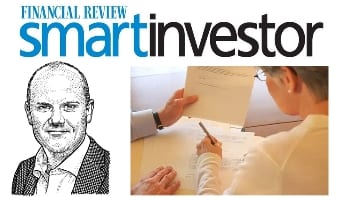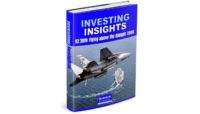Now is a great time to start planning how to get your self-managed super fund off to a cracking start. Mark these important tasks in your diary now.
Note: This article by Tim Mackay was originally published in the Australian Financial Review. You can view it on the AFR website [here] ($paywall)
In between time with family and cricket and tennis on the TV in January, I encourage you to dedicate serious reading and research time to markets, your investments and your portfolio asset allocation. Identify exciting investment opportunities and prepare your SMSF for potential risks and increased volatility.
There is no correct time you should do this in a year, but I’ve long believed reviewing your portfolio twice a year at fixed times is a great habit. If things materially change in between these times, this can be a catalyst to do it more often.
In August and September download and collate trade notes and bank, dividend and tax statements to prepare your 2018-19 financial accounts.
Of course research and reading are not enough; you need to convert investing insights into actionable investing ideas you can implement in your SMSF portfolio.
If you lodge your own SMSF accounts (remember they must be audited), then February 28 is your lodgement deadline for 2017-18 accounts. Aim to complete this by January and then spend February in the pool with the grandkids or on the golf course.
February 28 is also when the first 2019 SMSF PAYG quarterly instalment is due for accumulation balances. Also note down April 28, July 28 and October 28 as 2019 PAYG quarterly due dates.
We will likely have a federal election in May. If Labor is elected, you will have a narrow window to decide what you will do in response to its proposed franking credit reforms, due to start June 1, 2019.
If your accountant lodges your 2017-18 SMSF accounts, then this needs to be done by May 15 at the latest.
May is also the time to start completing your end-of-financial-year SMSF tasks. Don’t wait until June when it can become stressful, start as early as possible. If you’re in pension mode, make sure you’ve made (or will make) your annual minimum pension payment. If you’re in accumulation mode, make contributions up to your caps but not over. Makes sure you have copies of all trustee meeting minutes and written resolutions.
If you have a property in your SMSF, June is the time to obtain your annual valuation. Tamara Voninski
In June, check you’ve completed all end-of-year tasks and that you haven’t exceeded your caps, especially if you have multiple super funds. If you have a property in your SMSF, obtain your annual valuation.
July is the beginning of a new financial year. Once again, dedicate significant research and reading time to gain investment insights. This is the “sharpen the saw” habit that Steven Covey describes in Seven Habits of Highly Effective People. If you’re too busy to plan your investment strategy at least twice a year, then you’re planning to fail.
If you made a personal concessional contribution in the 2018-19 financial year, in July give your accountant a notice of intent to claim a deduction.
In August and September download and collate trade notes and bank, dividend and tax statements to prepare your 2018-19 financial accounts. Send them to your accountant and ask what else he or she needs to proceed.
Spring clean your SMSF in September. Check all assets are held in the fund’s name. Update your fund’s annual investment strategy. Review your reversionary pension and death benefit nominations. Check your US tax elections (W-8Ben) are up to date. Ensure your employer has your correct super fund payment details.
If you submitted your SMSF accounts late last year or your SMSF was established in the 2018-19 financial year, then your 2018-19 accounts are due October 31. If that’s you, get your skates on.
I’m a big fan of dedicating December to quality family time. Even though I’m passionate about SMSFs, I know your world does not revolve around your SMSF. Spend December reminding yourself why you are building and protecting your family’s wealth.
For most of us, the simple purpose of our SMSF is to fund our dream retirement: to travel and explore at home and abroad; to financially support and spend quality time with family; to help others with targeted philanthropy; and to follow our hobbies and passions. Let these meaningful family goals inspire you to plan confidently for your SMSF in the exciting year ahead.
Tim Mackay is an independent advisor at Quantum Financial. You can view his personal website at www.theindependentfinancialadvisor.com.au
You can view the original Australian Financial Review article by Tim Mackay ‘An SMSF action plan for 2019 to keep your fund running smoothly’ in PDF format below.
Other Australian Financial Review articles by Tim Mackay that you may find interesting:
- Industry funds’ DIY options could help you keep franking credits
- When to close your SMSF
- Who to include in your self-managed super fund
- How to keep your SMSF alive
- Top 100 SMSFs control $8 billion
- Why inviting your kids into SMSF is a bad idea
- SMSF tips: Should you really set up a self-managed superannuation fund?
- Complexity helps justify fees
- Banking royal commission: what SMSF investors need to know
- Why SMSF advisers need to lift their game
- An SMSF action plan for 2019 to keep your fund running smoothly








Leave A Comment